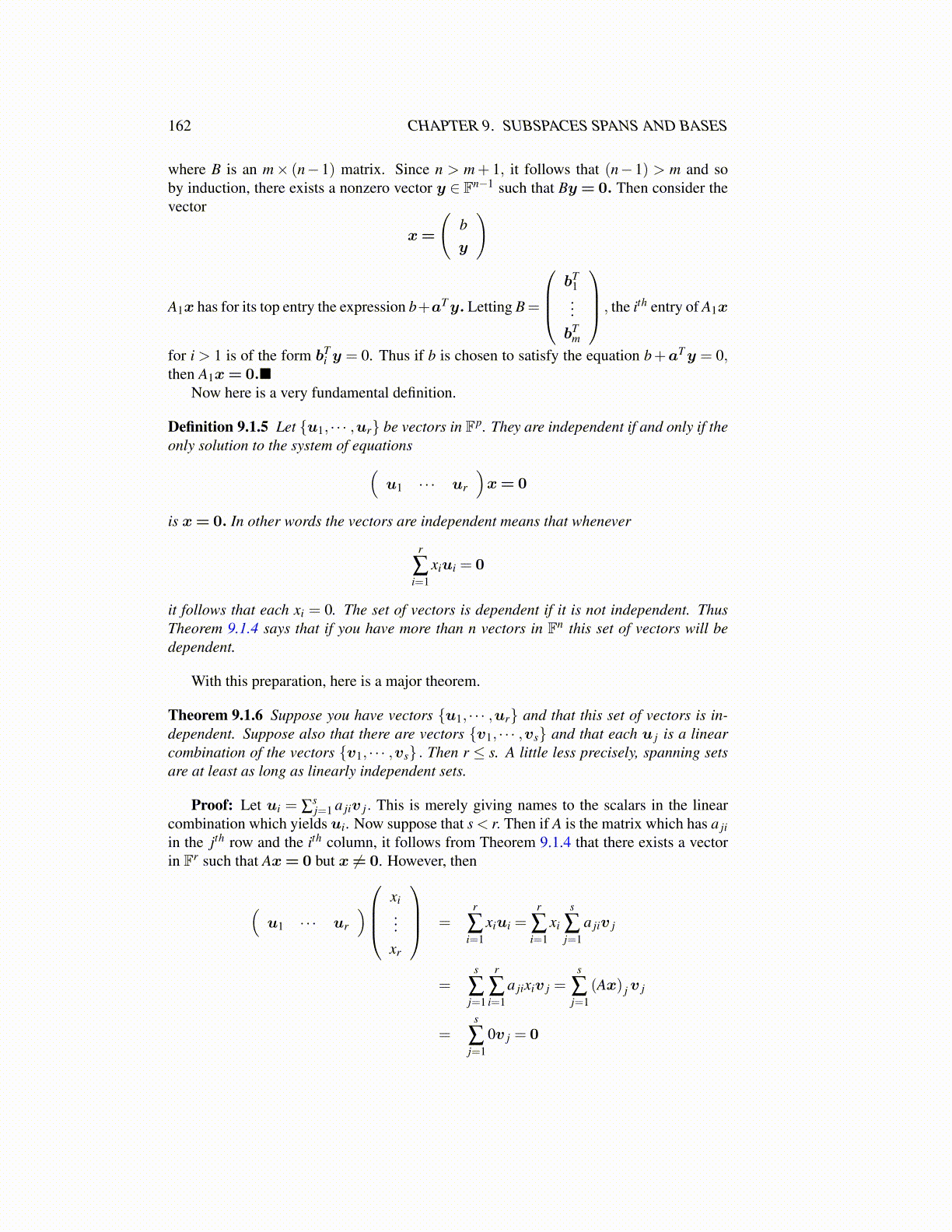
162 CHAPTER 9. SUBSPACES SPANS AND BASES
where B is an m× (n−1) matrix. Since n > m+ 1, it follows that (n−1) > m and soby induction, there exists a nonzero vector y ∈ Fn−1 such that By = 0. Then consider thevector
x=
(by
)
A1x has for its top entry the expression b+aTy. Letting B=
bT
1...bT
m
, the ith entry of A1x
for i > 1 is of the form bTi y = 0. Thus if b is chosen to satisfy the equation b+aTy = 0,
then A1x= 0.■Now here is a very fundamental definition.
Definition 9.1.5 Let {u1, · · · ,ur} be vectors in Fp. They are independent if and only if theonly solution to the system of equations(
u1 · · · ur
)x= 0
is x= 0. In other words the vectors are independent means that whenever
r
∑i=1
xiui = 0
it follows that each xi = 0. The set of vectors is dependent if it is not independent. ThusTheorem 9.1.4 says that if you have more than n vectors in Fn this set of vectors will bedependent.
With this preparation, here is a major theorem.
Theorem 9.1.6 Suppose you have vectors {u1, · · · ,ur} and that this set of vectors is in-dependent. Suppose also that there are vectors {v1, · · · ,vs} and that each u j is a linearcombination of the vectors {v1, · · · ,vs} . Then r ≤ s. A little less precisely, spanning setsare at least as long as linearly independent sets.
Proof: Let ui = ∑sj=1 a jiv j. This is merely giving names to the scalars in the linear
combination which yields ui. Now suppose that s < r. Then if A is the matrix which has a jiin the jth row and the ith column, it follows from Theorem 9.1.4 that there exists a vectorin Fr such that Ax= 0 but x ̸= 0. However, then
(u1 · · · ur
)xi...
xr
=r
∑i=1
xiui =r
∑i=1
xi
s
∑j=1
a jiv j
=s
∑j=1
r
∑i=1
a jixiv j =s
∑j=1
(Ax) j v j
=s
∑j=1
0v j = 0